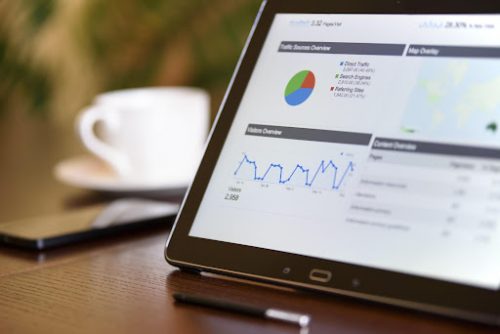
In the brave new world of digital marketing, it’s not just important to do well – it’s important to know when you’re doing well. The old days of simply judging the effectiveness of a marketing campaign are long gone, and today’s digital marketing campaigns rely on a varied selection of KPIs; or in other words. These key performance indicators provide a wider perspective on whether your campaign is hitting the mark.
What is a KPI? That depends entirely on the campaign, but most campaigns will have some in common. You’re looking for performance markers that show you if you’re hitting your target audience, if they’re seeing the ads, and if those ads lead them to engage with your content and ultimately make a purpose? A good KPI lets you track your customers’ engagement at all levels of the process and tells you if they’re interested and taking the next step.
5 Most Common Digital Marketing KPIs
Digital Engagement
Like it or not, no company can really pull off an effective digital marketing strategy without taking social media into account. These powerful platforms provide companies with an audience of billions and one of the easiest ways to judge the campaign’s success.
All these platforms have some form of view counter, like counter, or option to share or repost the content. This makes it easier to learn which type of content gets the most engagement, and which platforms are best for reaching your target audience.
Click-Through Rate (CTR)
This is the most commonly-tracked KPI, and it lets you know which of your ads are getting people to click on the link after they see it. You’re generally aiming for a click-through rate of over 1%. If that seems low, remember that most people might be seeing your content simply by screening through their social media feed.
Content that is seen by a more selective audience, such as those receiving a newsletter, should have a higher click-through rate. Ideally, your stats team should be keeping track of all your campaigns and their CTR rate to create a fuller picture.
Conversion Rate
This is probably the most important KPI available because it measures how many people get to the end of the path you’re setting up. A conversion is when you can take a click-through and get people to actually make a purchase, sign up for a service, or take whatever action you’re aiming for.
The needed conversion rate will vary depending on the goal – getting people to provide their email for a newsletter will have a higher conversion rate than making an expensive electronics purchase. If the click-through is the starting bell of the campaign, the conversion rate is the finish line.
Keyword Ranking
Many companies today neglect their SEO because they rely so heavily on specialized marketing. However, your search engine ranking and keywords are still key to expanding your audience. This is how many new customers will learn about your product or service for the first time, and it’s critical to ensure you have a decent place in the Google rankings.
You want a common keyword to ensure traffic but specialized enough that you won’t be buried under a flood of mega-companies. Using tools like a keyword research platform will go a long way. For more information on one of the most reliable applications, check out the Ahrefs Tool Guide: Keyword Explorer for e-Commerce. A resource to help with understanding how your competitors use keywords and getting a leg up on them.
Customer Acquisition Cost
Your customer acquisition cost, or CAC, may not tell you anything about your traffic – but it does tell you if your marketing is hitting its goal. Many of the top marketing sites are rather expensive, and if you’re not getting the same traffic there, it may be time to cut bait.
You should have an idea of your customer acquisition cost, or the value of each signup based on your ad spending, for each platform you use. Many companies succeed most after consolidating their advertising efforts on a single platform.
A Framework for Successful Digital Marketing Measurement
In order to make the most of your digital marketing strategy, it’s key to have the tools to get you the right data. This is why investing in a top-tier statistical data suite can be the most important decision any company makes.
Once you have the system you need to collect and analyze data, it’s easier to use those findings to improve your digital marketing strategy. Many companies that go for a broad marketing strategy find that a closer look means much of their investment is essentially talking to no one, and they could get the same or better results for a fraction of the cost.
The Keys to Success
How many KPIs does your company use? Too often, just missing one means you’re missing a huge part of the picture. Your time and money is valuable, and you owe it to yourself to be armed with all the relevant data.
Which of digital engagement, click-through rate, conversion rate, keyword ranking, and customer acquisition cost will provide the most information? That will depend on your business model. But armed with all five, you’ll be able to chart a better path forward for your company.
Interesting Related Article: “3 Ways White Label SEO Can Help Your Marketing Agency“

